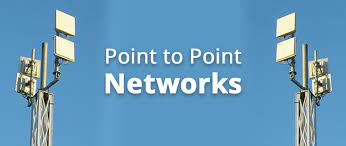
By admin Date of issue: Sep 26,2023
Bridging the Digital Divide: PTP/PTMP Wireless Networks
Introduction
In today's interconnected world, access to reliable and high-speed internet connectivity is no longer a luxury but a necessity. As populations grow and technology advances, the demand for efficient and cost-effective networking solutions has never been higher. Point-to-Point (PTP) and Point-to-Multipoint (PTMP) wireless networks have emerged as powerful tools in bridging the digital divide, providing connectivity to remote and underserved areas. In this technical article, we will delve into the intricacies of PTP/PTMP wireless networks, their key components, advantages, challenges, and real-world applications.

I. Understanding PTP and PTMP Wireless Networks
1. PTP Wireless Networks:
Point-to-Point (PTP) wireless networks establish a direct wireless link between two fixed points, typically over a long distance. These networks are often used for high-capacity data transmission, backhaul connections, and connecting remote locations to the internet or corporate networks. Key features of PTP networks include:
Line-of-sight (LOS) communication: PTP networks require unobstructed line-of-sight between the two endpoints for optimal performance.
High throughput: PTP links offer high data rates, often in the gigabit range, suitable for demanding applications like video streaming, voice over IP, and data transfer.
Low latency: PTP networks minimize latency, making them suitable for real-time applications such as online gaming and video conferencing.
2. PTMP Wireless Networks:
Point-to-Multipoint (PTMP) wireless networks, on the other hand, connect a single base station (access point) to multiple remote endpoints (subscriber units). PTMP networks are commonly used in scenarios where multiple users or locations need to be connected to a central hub. Key characteristics of PTMP networks include:
Hub-and-spoke architecture: PTMP networks have a central hub that communicates with multiple remote endpoints, creating a hub-and-spoke topology.
Scalability: PTMP networks can serve numerous endpoints, making them suitable for serving communities or regions with multiple users.
Shared bandwidth: Bandwidth is shared among all connected endpoints, so the available capacity decreases as more endpoints are added.
II. Components of PTP/PTMP Wireless Networks
Both PTP and PTMP wireless networks share common components:
1. Antennas: High-gain directional or sector antennas are used to establish wireless links. PTP links often employ parabolic dish antennas for focused beamwidth, while PTMP base stations use sector antennas to cover a wider area.
2.Radios: Radio transceivers equipped with modulation schemes such as OFDM (Orthogonal Frequency Division Multiplexing) are used for data transmission and reception.
3. Base Stations: In PTMP networks, a base station or access point serves as the central hub, providing connectivity to multiple remote endpoints. This station is often connected to the internet or a core network.
4. Subscriber Units: Remote endpoints or subscriber units connect to the base station to access the network. Subscriber units can range from CPE (Customer Premises Equipment) in residential scenarios to business-grade equipment in enterprise setups.
5.Networking Equipment: Routers, switches, and other networking devices are essential for managing traffic within the network, ensuring Quality of Service (QoS), and connecting the wireless network to the broader internet or corporate infrastructure.
III. Advantages of PTP/PTMP Wireless Networks
1. Rapid Deployment: PTP/PTMP wireless networks can be deployed quickly, especially in areas lacking wired infrastructure. This makes them invaluable for disaster recovery and temporary connectivity needs.
2. Cost-Efficiency: Compared to laying physical cables, wireless networks can significantly reduce deployment costs, particularly in remote or challenging terrain.
3. Scalability: PTMP networks can be expanded easily by adding more subscriber units, making them suitable for growing communities and businesses.
4. Flexibility: Wireless networks are adaptable to various topographies and can be easily reconfigured as needs change.
5. Last-Mile Connectivity: PTP/PTMP networks address the challenge of providing the "last mile" connectivity to remote and underserved areas, closing the digital divide.
IV. Challenges and Considerations
1. Interference: Radio interference from other wireless devices or environmental factors can affect the performance of PTP/PTMP networks. Careful frequency planning and spectrum management are essential.
2. Line-of-Sight: PTP networks require a clear line-of-sight, which may not always be achievable in densely forested or urban areas.
3. Security: Wireless networks are susceptible to eavesdropping and security breaches. Encryption and robust security measures are crucial.
4.Bandwidth Sharing: In PTMP networks, as more subscribers join, bandwidth contention can become a challenge. Effective QoS mechanisms are necessary.
V. Real-World Applications
PTP/PTMP wireless networks find applications in various sectors:
1. Rural Broadband: Bringing high-speed internet to remote and rural areas where laying fiber is economically unviable.
2. Public Safety: Deploying temporary networks for disaster response and public safety operations.
3. Video Surveillance: Creating wireless backhaul links for video surveillance systems in urban areas.
4. Industrial Connectivity: Establishing reliable connections for monitoring and controlling remote industrial equipment.
5. Education: Providing internet access to schools and universities in underserved regions.
Conclusion
PTP and PTMP wireless networks play a crucial role in extending internet connectivity to remote and underserved areas, helping bridge the digital divide. Their rapid deployment, cost-efficiency, and scalability make them valuable tools in today's interconnected world. However, overcoming challenges like interference and security concerns requires careful planning and management. As technology continues to advance, PTP/PTMP wireless networks will remain vital in connecting the unconnected and enabling the digital future.
ADD:116 ChengYang Road, XiangCheng District, SuZhou City,JiangSu Province, China
Skype:sunbenku1
Email:support@wallystech.com
Copyright © 2020 Wallys Communications (Suzhou ) Co., LTD Sitemap



